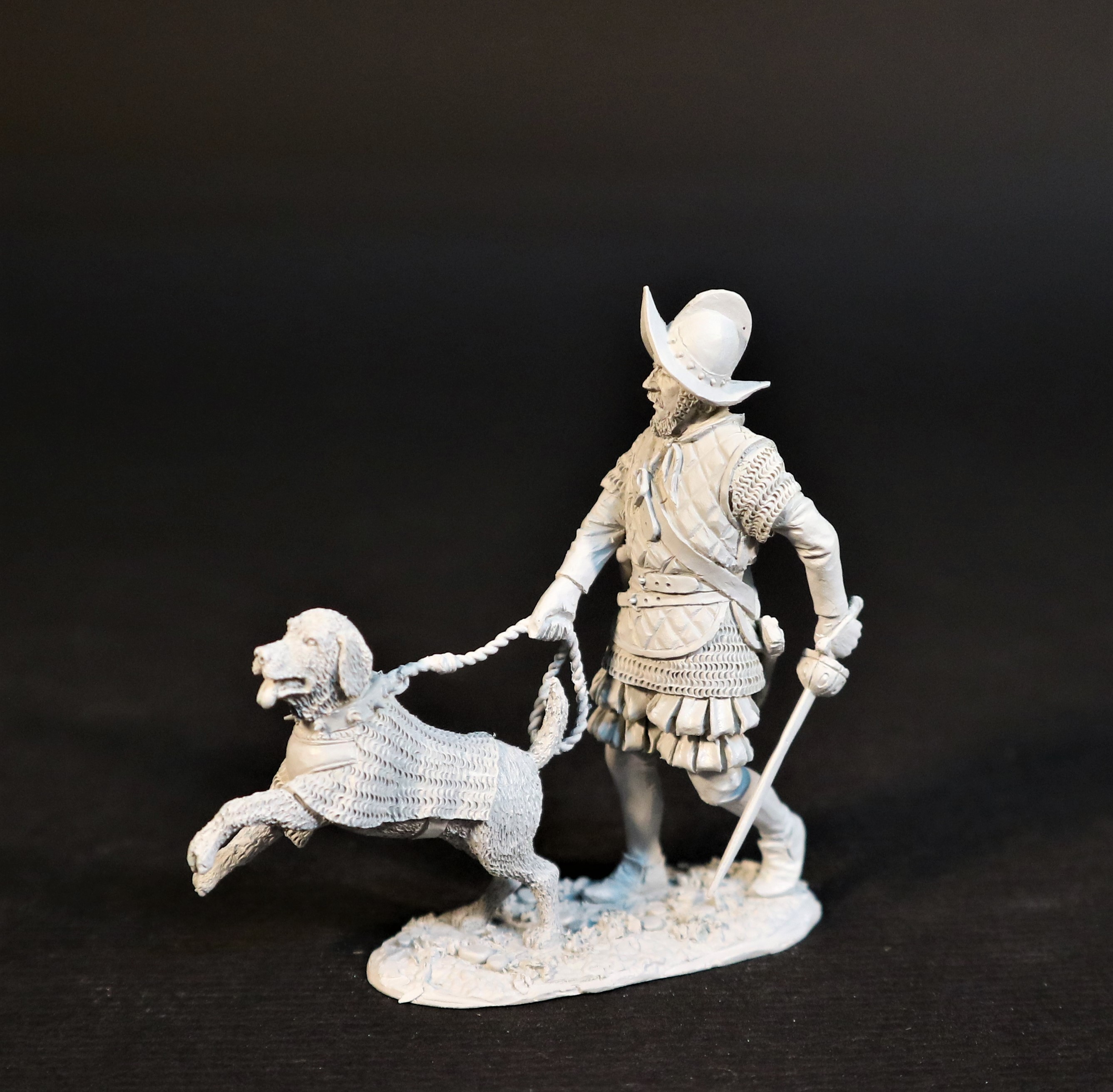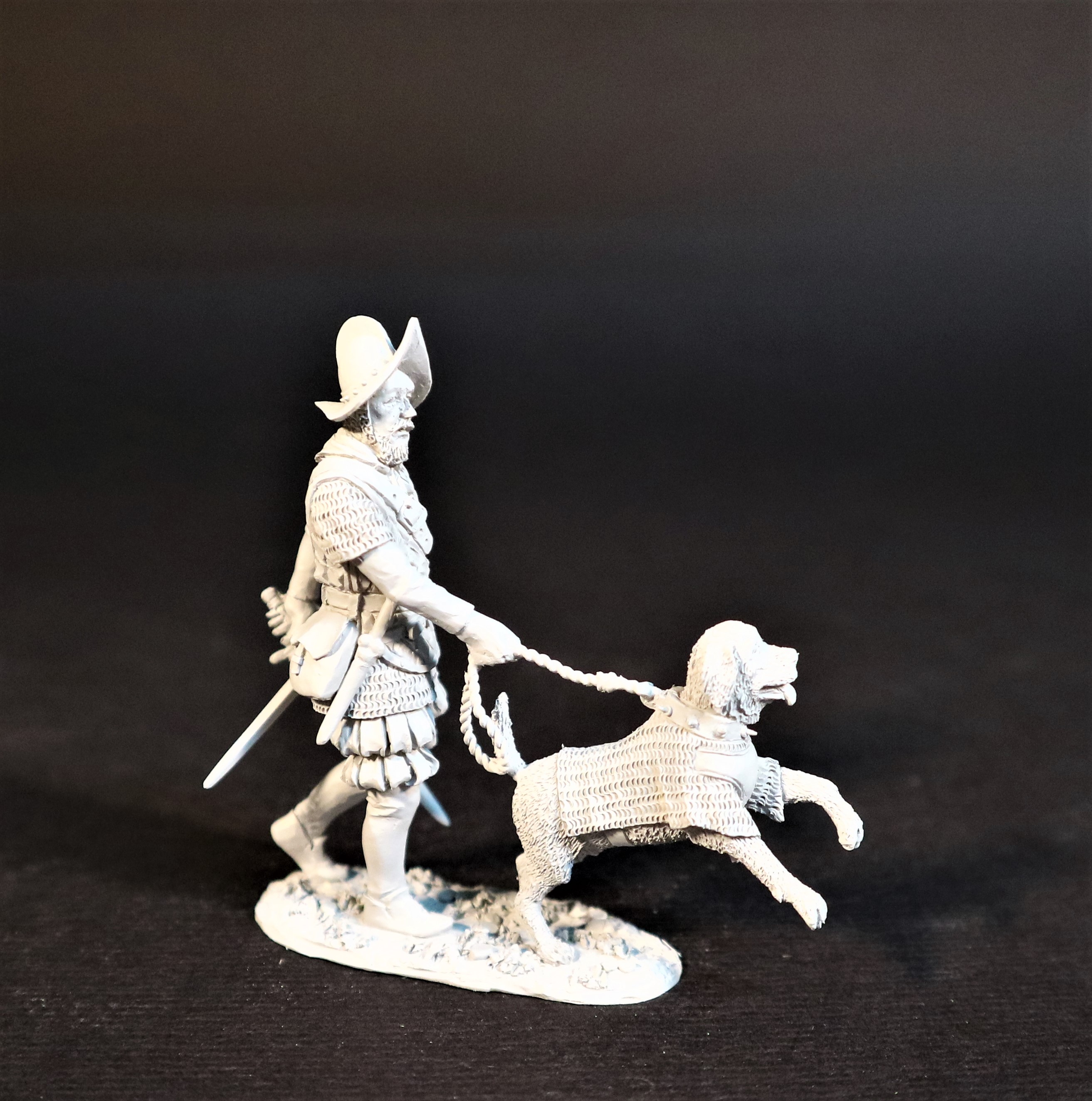26th Jul 2023
John Jenkins Designs Preview: Conquistadors
Often called man’s best friend, dogs have been partnered with humans and used in warfare since their domestication more than 50,000 years ago. Not just for attacking, work hounds were used for protecting livestock or property, or for simple companionship.
The earliest written account of war dogs comes from a classical source regarding Alyattes, King of Lydia. The war dogs are said to have attacked and killed invaders in a battle against the Cimmerians around 600 BC.

Christopher Columbus was the first to use dogs as weapons in the New World. He released them upon the indigenous people of Hispaniola in 1493 and to disperse groups that came to stop his landing in Jamaica in 1494. But it was the Battle of Vega Real in 1495 that awoke Columbus to the potential that dogs had as weapons against the inhabitants of this new land.
On March 27, 1495, Columbus and his brother Bartholomew marched inland on Hispaniola with 200 men, 20 horsemen, and 20 Spanish Mastiff dogs to do battle with the natives, who were opposing Spanish rule. The forces were led by Spanish conquistador Alonso de Ojeda, who had learned the art of using war dogs in battles against the Moors of Granada.
With each subsequent voyage to the Americas, hundreds and then thousands more dogs were brought over. The most popular breed was the mastiff, which could weigh up to 250 pounds and crush bones with its massive jaws. Their sheer size and fierce look instilled terror among the native population. Famous conquistadors, like Balboa, Velasquez, Cortes, De Soto, Toledo, Coronado and Pizarro, all used dogs as instruments of subjugation, execution and as a form of psychological warfare.
But it was Juan Ponce de Leon, a top military official in the colonial government of Hispaniola, who unleashed the fiercest warrior of them all – Becerrillo.

Becerrillo, a name meaning ‘Little Bull,’ was a brown-eyed, red pelted mastiff owned by Spanish explorer Juan Ponce de León but often entrusted to the care of conquistadors Captain Diego Guilarte de Salazar and Sancho de Aragón.
Becerrillo’s origins are uncertain, but it is believed he was born in the Americas in the kennels of Ponce de León. The earliest records of him date to 1511, but by then he was already described as sporting battle scars.
The 16th-century Spanish historian and chronicler, Bartolomé de las Casas, reported that Becerrillo “attacked his enemies with frenzied rage and defended his friends with great courage…,” adding that the indigenous people were “more afraid of ten Spanish soldiers with Becerrillo than a hundred by themselves.”
While Becerrillo had been trained to kill, one historical account, tells a tale of mercy. The conquistadors were camped outside the settlement of Caparra in Puerto Rico waiting for the arrival of the Spanish governor. Looking for something to amuse themselves, Salazar gave a folded piece of paper to an old woman, telling her to deliver it to the governor. As the woman began on her way, Salazar released Becerrillo commanding him to kill her. As the dog raced towards her, the woman dropped to her knees and was reported to have called out "Please, my Lord Dog. I am on my way to take this letter to Christians. I beg you, my Lord Dog, please do not hurt me."
Becerrillo sniffed the woman and then, disobeying his master’s orders, turned and walked away. When the governor was told what had occurred, he released the old woman and forbade any further terrorizing of the locals, declaring “I will not allow the compassion and clemency of a dog to overshadow those of a real Christian.”
The campaign of terror committed through Becerrillo came to an end one morning in 1514 when indigenous natives from the island of Vieques captured Sancho de Aragón. According to Spanish historian Gonzalo Fernández de Oviedo y Valdés in his 1535 Historia, the dog pursued the attackers who had taken off in dugout canoes, by making his way through the water. Becerrillo became an easy target and was hit by a volley of arrows. Spanish soldiers cauterized his wounds, but he died shortly afterwards. He was given a secret burial and, according to Oviedo, was mourned more than their fallen comrades.
